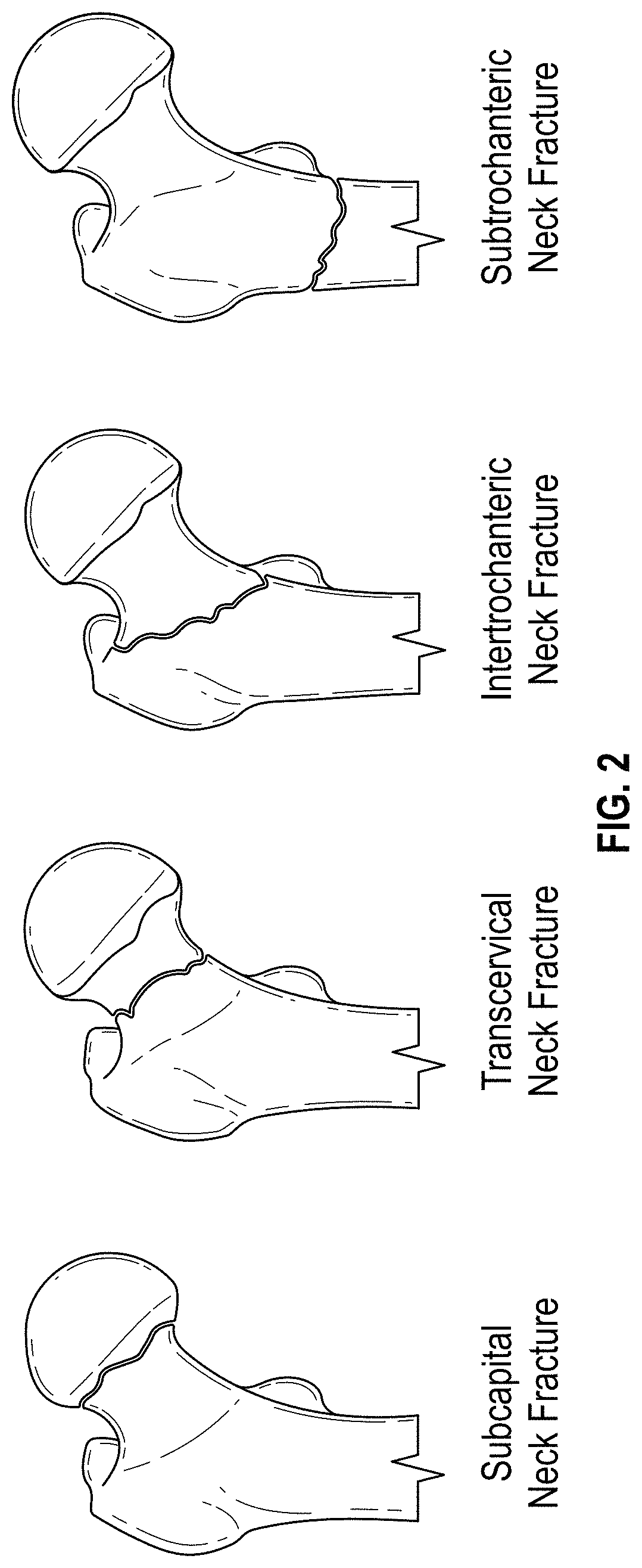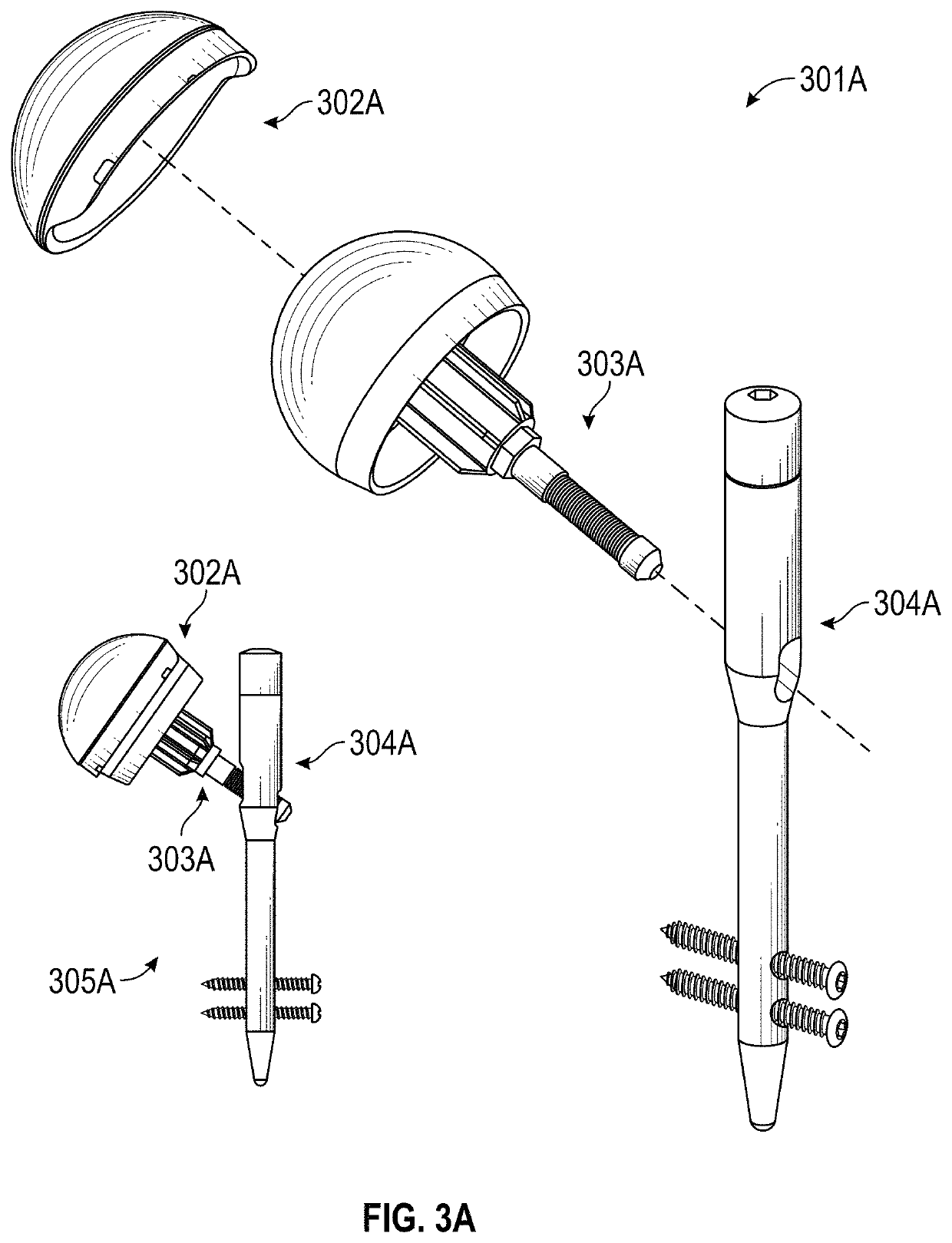Hip implant device
a technology of implants and proximal joints, applied in the field of implants, can solve the problems of increased wear and tear of metal-to-metal joints, inability to drill from two sides, and inability to guarantee the alignment of two drill holes, and achieve the effect of strengthening the binding of the plastic joint surfa
- Summary
- Abstract
- Description
- Claims
- Application Information
AI Technical Summary
Benefits of technology
Problems solved by technology
Method used
Image
Examples
Embodiment Construction
[0042]FIG. 3A shows the assembled view 305A and exploded view 301A of an embodiment of the current invention. The implant consists of the three portions: an acetabular cup 302A, a femoral head and neck 303A and a main body shaft 304A.
[0043]The design for this implant uses only bio-compatible materials, such as polyethylene, polyether ether ketone (PEEK) or ultra-high-molecular-weight polyethylene (UHMWPE), and bio-compatible metal, such as cobalt, chromium, titanium, alloys thereof, or medical-grade stainless steel 316.
[0044]FIG. 3B shows a coronal view 301B of the resurfacing hip implant of the invention 302B, which shows the anatomically positioning in the proximal femur 303B. The acetabulum implant cup 304B is inserted into the hip's acetabulum anatomy 305B. The femoral head and neck 306B and the main body shaft 307B are inserted into the proximal femur 303B. Bone screws 308B secure the main body shaft 307B at the femoral shaft region through the cortical bone 309B from lateral t...
PUM
 Login to View More
Login to View More Abstract
Description
Claims
Application Information
 Login to View More
Login to View More - R&D
- Intellectual Property
- Life Sciences
- Materials
- Tech Scout
- Unparalleled Data Quality
- Higher Quality Content
- 60% Fewer Hallucinations
Browse by: Latest US Patents, China's latest patents, Technical Efficacy Thesaurus, Application Domain, Technology Topic, Popular Technical Reports.
© 2025 PatSnap. All rights reserved.Legal|Privacy policy|Modern Slavery Act Transparency Statement|Sitemap|About US| Contact US: help@patsnap.com



